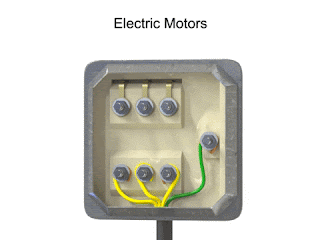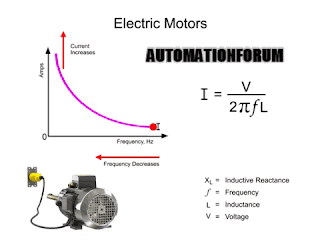Electric Motors
There are many types of Electric Motors used for a variety of purposes in commercial industry.
Motor Direction
One critical task must performed prior to installing a motor is determining the motors rotational direction.If a motor is required to rotate in a specific direction,it will have a direction arrow prominently displayed on the frame.But with few exception most three phase motors are made with symmetrical parts so the motor can rotate in either direction.Since these multi-directional motors are equally efficient in either direction there is no standard direction of rotation.Therefor when a three phase motor is first connected it may run in either direction and technicians must be careful to install it properly.While the motor itself can run in either direction without harm the components that the motor drives maybe uni directional.For instance running a pump in the wrong direction may cause damage due to caviatation or expulsion of the shaft seal.
If the motors rotation is incorrect for the required application it can be reversed by simply changing their connection to any two of the three power wires.
While many motors are three phase and easily reversible others are not,for non reversible motors you must be very careful to check and double check that the correct rotation is specified.
Frequency Current Relation
In addition rotation technicians must pay close attention to the frequency and current requirements for a given motor application. Frequency and current is inversely proportional. As the frequency decreases current will increase.Motors are frequency sensitive which means that frequency change can cause speed changes within the motor.If frequency decreases significantly the motor may experience a large increase in current which can cause motor components to overheat.








